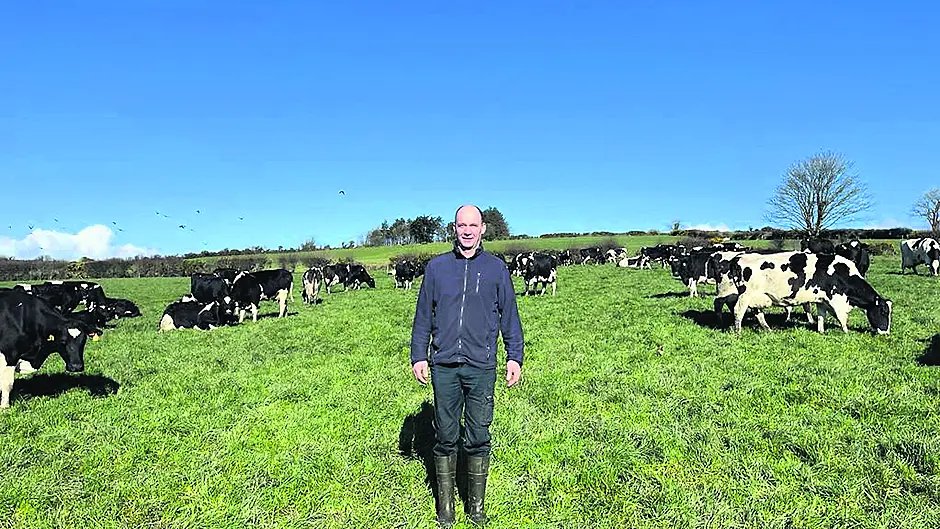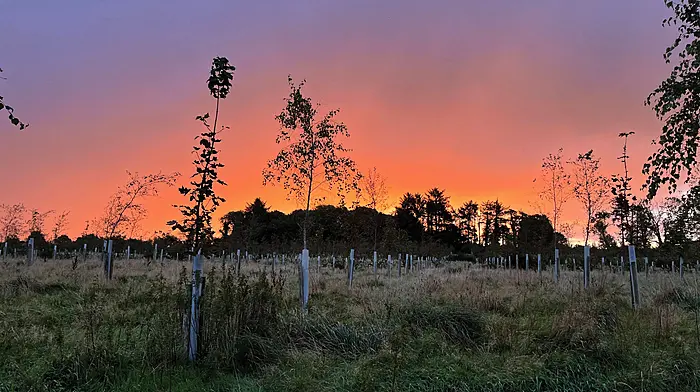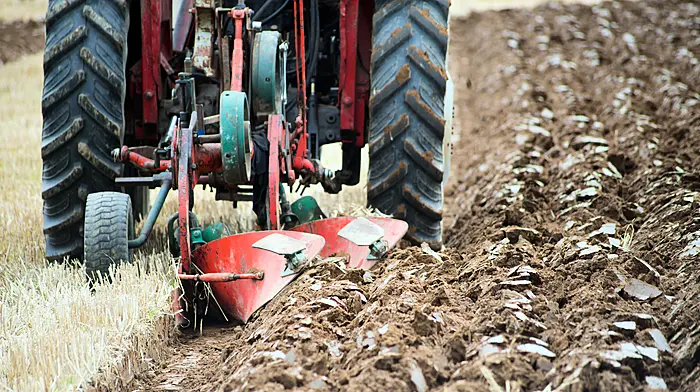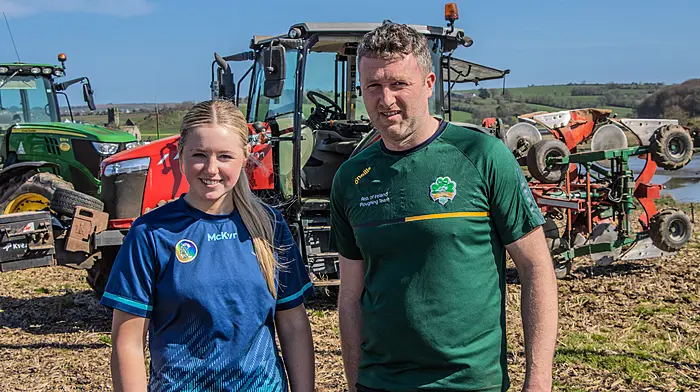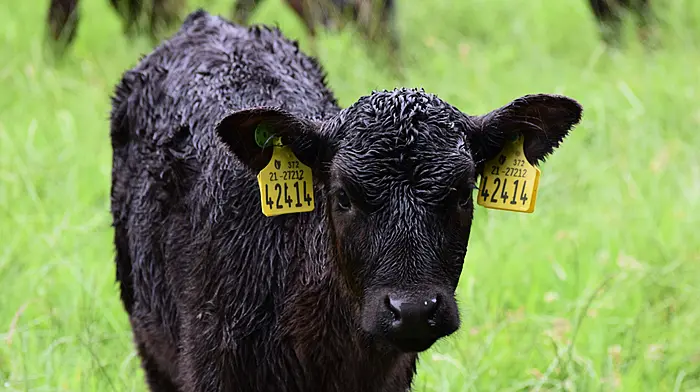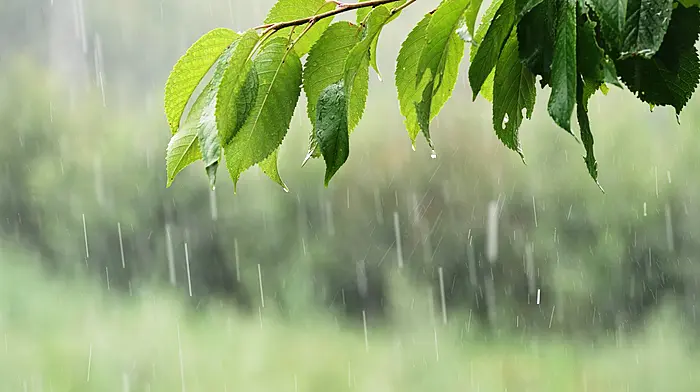The Goggins’ family farm is one of the Teagasc Signpost demonstration farms in West Cork leading the way in reducing GHG emissions by increasing the fertility of its herd
RAYMOND Goggin is farming at Templemartin outside Bandon with his wife, Delia. They have three children – Cian, Conor and Aoibhinn.
Raymond and Delia are one of the Teagasc Signpost demonstration farms based in West Cork that are leading the way in the reduction of GHG emissions on their farms, along with improving water quality, biodiversity and increasing profit margins from farming.
Raymond farms 59 hectares with a milking block of 40ha and one outside block that is used for silage and rearing heifers. In 2020, he milked 122 cows.
Raymond has always had a strong focus on EBI (economic breeding index) and his black and white herd has an EBI of €180 which puts them in the top 5% of herds ranked on EBI in Ireland.
By increasing the herd’s EBI, herd fertility will improve, therefore less replacement animals are required and production is higher with a more efficient cow.
Improving herd EBI is one of the best tools that dairy farmers can use on their farms to reduce emissions.
In 2021, Raymond calved 91% of his herd in six weeks using a replacement rate of 18%. He sold 530kg milk solids per cow to Dairygold co-op last year, or 64,700kg in total.
The average Dairygold supplier last year had a herd EBI of €129 and sold 437kg milk solids per cow. When you do the simple calculation, this means that Raymond needed 26 cows less than the average Dairygold supplier to produce the same amount of milk solids. That’s a lot of cows producing a lot of extra emissions and costing more to Raymond.
Efficient farming is not all about output, of course. Increasing grass utilised is the biggest factor influencing net profit on dairy farms, whilst also reducing farm emissions.
The weather in April and May of 2021 made it a difficult grass growing year and Raymond fed 1.08 tonnes meal/cow. Raymond regularly measures grass and he grew 13.4tonnes grass DM/ha.
In 2020, he grew 14 tonnes/ha. Every extra week at grazing reduces GHG emissions by 1% so it’s important to have the farm set up with good infrastructure to allow early and late grazing in the shoulders. Raymond had the cows out to grass on February 3rd this year. They have been in and out of the shed since, due to the difficult weather. He has 25% grazed to date and is still planning to reach his target of 66% grazed by the middle of March.
Reducing fertiliser while maintaining grass production will be a challenge on Raymond’s farm like many other dairy farms, but he is up for the challenge.
Last year Raymond spread 197kg nitrogen/ha compared to 229kg nitrogen/ha spread in 2020. The target is to reduce chemical nitrogen by 15% by 2025 and 20% by 2030.
As well as optimising soil fertility and with better use of slurry – clover will play a big role in this reduction of nitrogen. Raymond plans to increase clover in the sward by three different methods this coming year.
Firstly in one field that was reseeded last year with 2.25kg clover seed/acre and where there was good establishment of clover Raymond will reduce/cut out chemical nitrogen from May onwards to encourage the clover to fix its own nitrogen.
He plans to reseed an old sward this year, and those paddocks will get 2kg/acre of clover seed in the seed mix and will receive reduced chemical nitrogen after plant establishment again to encourage the clover plant to start fixing nitrogen.
And thirdly, in April, Raymond is hoping to oversow clover into two grass paddocks that are high in soil fertility and recently reseeded with 2-3kgs/acre of clover seed.
These paddocks are a little more open and this will allow light down to the clover plant when growing. It will be critical to graze these paddocks that are oversown every 8-10 days for 3-4 rotations to allow the clover plant to establish.
This can be tricky to do while managing a normal grazing rotation so it’s advised only to oversow no more than two paddocks each year.
• Grainne Hurley is a business and technology dairy advisor based in Macroom and is the co-ordinator of the Dairygold joint programme discussion group programme.

